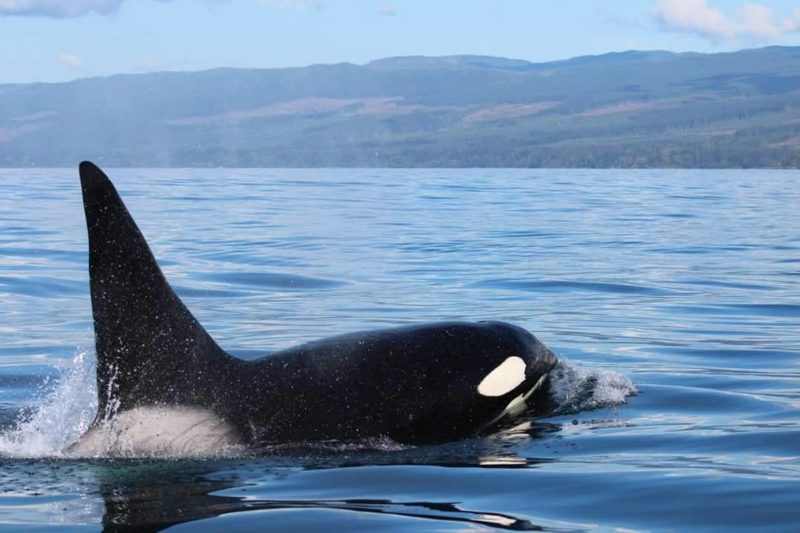If you’re lucky enough to spot a whale up close, you’ll probably spend the first few seconds of the encounter holding your breath. Once your brain starts working again, it will fill with questions: where did this whale came from? How old is it? Does it have a name?
That’s when you should visit happywhale.com.
Submit photos of your marine mammal encounter, and the site will identify the species and the individual’s name, based on its unique markings. That’s right, you can learn your whale’s name — and if it doesn’t have a name yet, you can give it one.
The site is fun to explore whether you’ve seen a sea creature or not, and it also serves a greater purpose. The data collected is a valuable tool for scientific research — the more we learn about where and when these creatures are spotted, the more we can do to understand and protect them.
“Data from whale watch voyages and expedition cruises cannot hope to be as in depth as data from a dedicated scientific cruise, but research voyages cannot be on the water as frequently as (tourist vessels) are, so their contributions can add incredible scope to data available for marine mammal science,” writes Happywhale.com. “This repetition can add up to enough to document almost every whale in a population, in some cases, and repeat sightings of individuals can help us understand movement patterns and population dynamics such as survivorship.”
Remember, be WhaleSAFE when observing wildlife:
- See a whale
- Admire at a safe distance
- Follow without disturbance
- Enjoy!
3 West Coast whales with big personalities
“Ocean conservation starts with connection. We believe that as we build personal relationships with the ocean and its wildlife, we become more invested stewards of the marine environment,” writes Happywhale.com.
In that spirit, here are three individuals we think you should meet:
- Ruffles the Southern Resident Killer Whale: Ruffles is named for his six-foot-tall ruffled dorsal fin, which has waves similar to corrugated cardboard. His other name is J1, meaning he was the patriarch of J Pod until his death in 2011. Ruffles lived to be about 60 years old, which is twice the life expectancy of most male orcas in the wild, and he was very, very big — about seven metres from nose to tail! You won’t be able to find Ruffles in the ocean, but you can track his past movements on Happywhale, or visit a life-size replica at the Royal BC Museum’s exhibit Orcas: Our Shared Future.
- Patches the Bottlenose Dolphin: Naturalist Mark Tyson first spotted Patches in 2006, and named him for the interesting patchwork of pigmentation on his skin. You can usually find Patches with a pod of other bottlenose dolphins sporting the more typical grey skintone — his patchy appearance is likely caused by Leucism, a condition that reduces melanin and causes a partial loss of pigmentation. Look for Patches in the waters between San Diego and Santa Barbara, California. .
- Flame (a.k.a. Smudge) the Humpback Whale: Flame is one of the most-sighted individuals on Happywhale’s database, named for the gorgeous mix of grey and white on her fluke. Flame spends a lot of time in the ocean near Juneau, Alaska, but on Happywhale you can also track her impressive journey from Hawaii to Alaska and back. Local guides say she doesn’t breach often, but she does dive gracefully, showing off her signature tail.
READ MORE: Nearly 30 Bigg’s orcas observed over long weekend in Salish Sea waters off Victoria
READ MORE: Listening to the voices of killer whales
Plan your adventures throughout the West Coast at westcoasttraveller.com and follow us on Facebook and Instagram @thewestcoasttraveller. And for the top West Coast Travel stories of the week delivered right to your inbox, sign up for our weekly Armchair Traveller newsletter!











 Permits open for the Yukon’s Tombstone backcountry and Kluane glamping
Permits open for the Yukon’s Tombstone backcountry and Kluane glamping